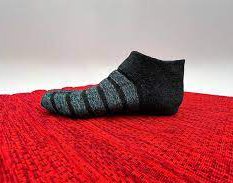Researchers at the Massachusetts Institute of Technology (MIT) have invented a tight-fitting fabric that can recognize the movements and even posture of the wearer. The researchers also used a circular knitting machine to produce a tight-fitting smart textile shoe with 96 pressure sensing points spread across the entire 3D fabric, MIT said. [US researchers develop fabric that senses wearers' movements – fibre2fashion]
The fabrication process, which employs digital-knitting technology, enables rapid prototyping, making it possible for the smart fabric to be manufactured on a large scale. This special textile could be used in healthcare.
A special type of plastic yarn was integrated and melted a bit using heat, which is a process known as thermoforming. By doing so, the scientists could enhance the precision of the pressure sensors woven into multi-layered knit textiles, which they call 3DKnITS. Via this technique, they were able to make a ‘smart’ shoe and mat, and then constructed a hardware and software system to measure and interpret data from the pressure sensors in real time, MIT said in a press release.
“With digital knitting, you have this freedom to design your own patterns and also integrate sensors within the structure itself, so it becomes seamless and comfortable, and you can develop it based on the shape of your body,” said Irmandy Wicaksono, a research assistant in the MIT Media Lab and lead author of a paper presenting 3DKnITS.
The machine learning system was able to predict motions and yoga poses done by a person standing on the smart textile mat with about 99 per cent accuracy. The researchers also used a circular knitting machine to produce a form-fitted smart textile shoe with 96 pressure sensing points spread across the entire 3D textile, MIT said. The shoe was then used to measure pressure put on various parts of the foot when the wearer kicked a football. The precise quality of 3DKnITS also makes them beneficial for applications in prosthetics where precision is crucial.
Wicaksono wrote the paper with MIT undergraduate students Peter G Hwang, Samir Droubi, and Allison N Serio through the Undergraduate Research Opportunities Program. Their findings will be presented at the IEEE Engineering in Medicine and Biology Society Conference. This project was supported partly by the MIT Media Lab Consortium.



